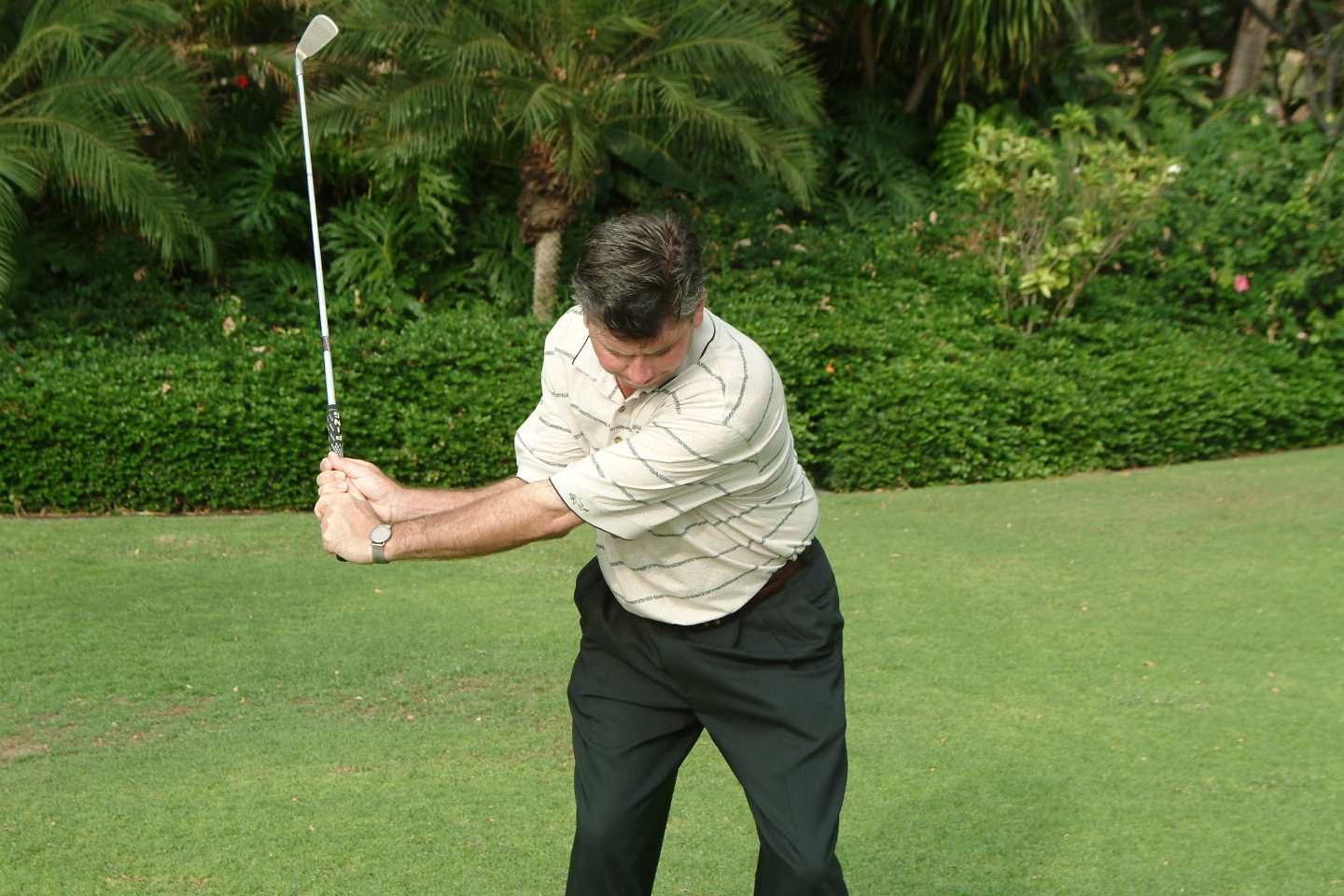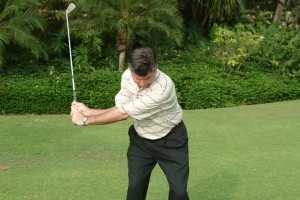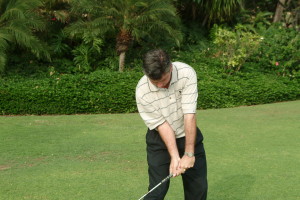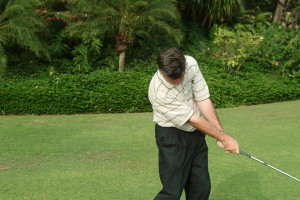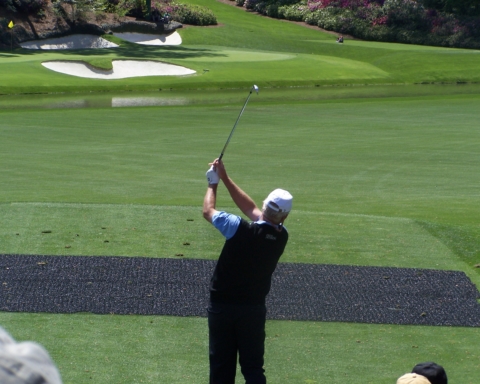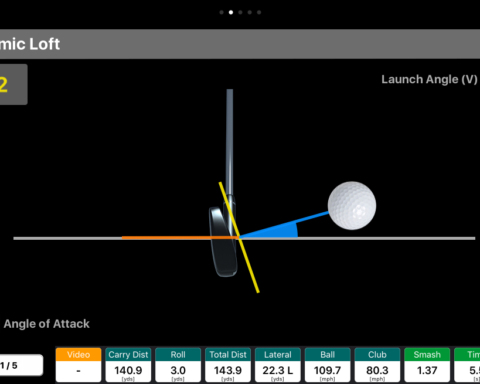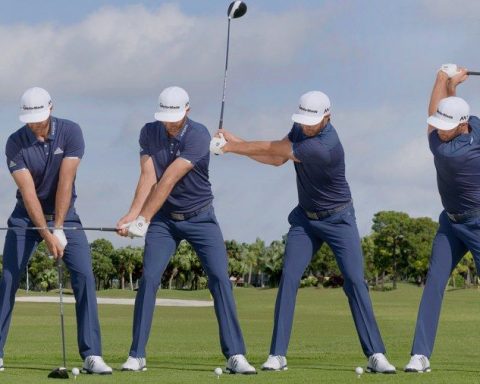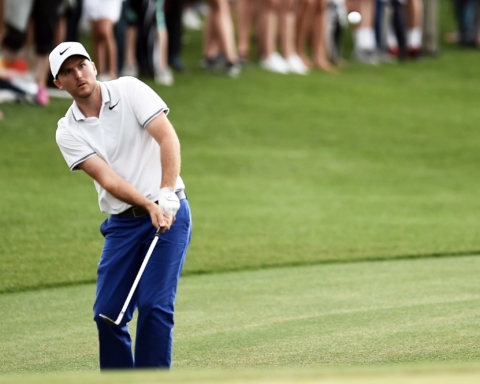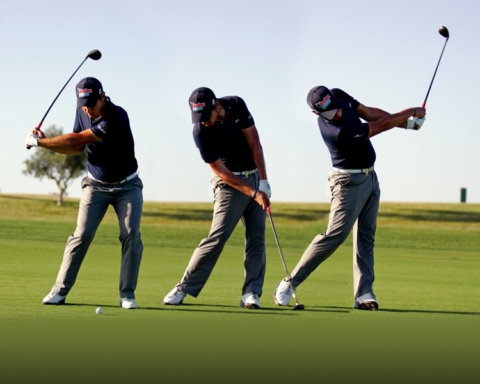There are more than five reasons why some golfers struggle but lets start with these basics. The nice thing about these habits is they can be changed fairly quickly.
-
Horrible short game
-
No swing fundamental basics
-
Poor coordination
-
Golf course management
-
Poor mental game
- A Horrible short game is the key to horrible scoring. This is a typical problem with a players that struggle to score. Many bad players don’t understand how important the short game is to scoring better. If par is 72, 36 shots are allowed for putting. Yes, half of the score is allowed for putting! Unfortunately even the best Tour players hit around 70% of greens in regulation or lower. The average golfer is estimated to hit 33% of greens in regulation or less. So you will spend a lot of time chipping and putting. Put more emphasis on your short game by putting in a little more time with your short game than you do with your driver. Next time you go the golf course try this [practice routine;
- Spend 5 minutes hitting putts from 3′-10′ from the hole. Focus on picking a target, lining up properly at your target and then hitting the ball the proper speed. Make sure your eyes are vertically aligned with the target line and golf ball.
- Spend 5 minutes practicing putts from 3′ with three balls. Hit three balls to the left edge, then right edge, then back of the hole then have the ball creep in just over the front. This is a great drill to help you control your speed and build your confidence.
- Spend 5 minutes hitting putts from 10′ – 35′ and get a good feel for the speed of the greens and how much the greens are breaking. Speed control is essential from this distance.
- Spend 5 minutes hitting chip shots from within 20′ of the green. You should focus on hitting the ball before the ground and controlling your speed. Make sure your ball position normally int the back in your stance, is consistent. Keep your weight forward, your grip fairly firm and limit wrist motion and elbow hinging.
- If you have time hit a few pitch shots and definitely hit 3-5 bunker shots if a practice bunker is available.
You can find short game lessons on http://myhome4golf.com/golf-instruction/
2. No swing fundamental basics is more than just common, it is the norm with poor golfers. Most golfers over use their arms and body in a very inefficient manner. A good golf swing uses a lot less energy and effort than the typical amateur players swing. The saying in golf instruction is you hook it with your arms and you slice it with your body. So if you can’t hook the ball that would indicate your arm motion is not very good. We can’t go into all the swing mechanics in this short article but if you can learn the relationship between your elbows and hips during the swing it is hard to be bad;
On the backswing take the club back with a straight left arm to a horizontal position with you right elbow on your body in front of your hip. Do the same on the follow through side. If you learn to do this and hit a golf ball you will automatically be in the top 10% of golf swings. Just practice doing what the pictures below show!
3. Poor coordination is not a permanent condition and can be improved with a little practice. Unless you played a lot of sports growing up like baseball, tennis or similar sports your probably not very “golf” coordinated. The nice thing about golf is nobody is throwing anything at you at 90mph and expecting you to hit it. The ball just sits there and waits for us. There are many drills to build body coordination and I will cover a few of those in a later post but lets focus on hand eye coordination. It takes a while for a the beginning golfer to learn how to hit the ball before the ground or just to hit the ball at the right level. For almost all shots you want to hit the ball with a descending blow then hit the ground with as much speed and consistency as you can. The easiest drill I know for training the eyes, brain and hands is to hold a club upside down in your hand and learn to touch targets. Hold the club by the head of the club and stand in front of a picture or tv set just far enough away that the club can just reach the target. Pick out four targets high left, high right, low right and low left. Now while keeping your body still and your feet planted reach out with the grip end of the club and touch the top left target softly with the grip end of the club. Then move to the next target and continue moving to the different targets for a few minutes. If you practice this simple drill a few nights a week at home for two weeks you will be amazed how much this will help you and how much your coordination will improve.
4. Poor golf course management is an epidemic problem in golf with not only bad golfers but many pretty good players. It is important to have confidence in golf but humility goes a long ways also. Understand that your goal is to have a low score not impress your friends with great shots that are high risk and low reward. Most players never legitimately break 90. Let’s use an average 380 yard par four for an example of how you can score. Learn to hit the ball off the tee onto the grass on or near the fairway 160-200 from the tee. Next lets hit the ball in the air on or within 30 yards from the green. Remember putting greens are typically 3,000 sq. ft. or larger so we are asking you to hit the ball within thirty yards of an area about the size of a large house. If we are on the green great, two putt. Most likely we will be off the green so hit your bunker shot or shot from the rough by chipping preferably to within 30 feet of the hole, then two putt. So the math works this way.
Hit 3 greens in regulation, par
Miss 15 greens getting the ball up and down 30% of the time, 10 over par
Total score if par is 72, 82 great round.
Learn the green, yellow, red method. Green shots are a go where the chance for success with the shot is very high. Yellow shots require caution such as 170 yard shot with a green with water on the front and a front pin. This Yellow shot requires caution and possibly taking an extra club towards the middle of the green. Red shots require getting out of trouble and not doing anything stupid. Red shots are different for all level of players but the thinking is the same. If you have a poor chance for success with the possibility of making a big number, take the safe shot and move along. Try this method next time you play and see how it works.
5. A Poor mental game will limit your ability to get close to your goals. There are many levels to the mental game and many books written about this subject. If you go to the first tee without a plan or a goal you will probably have a crappy day. Make a goal before every round, here are a few you should try;
- Today I will make a good decision on what shot to hit and set up properly
- Today I will be better at accepting my shots good or bad and not let it effect my next shot
- Today I am not going think about mechanics and just focus on tempo and relaxation
- Today I am not going to spend to much time over the ball and do a better job of breathing before each shot
- Today I will keep my balance better and focus on my footwork
These are just a few examples of one way to better your mental game. Another key is having a better “scientist” in you. Before each shot get a proper yardage then be realistic about which club you should use. Next pick a ball flight and a type of shot that is smart and then get mentally ready for a good shot. The idea is to have a consistent pre-shot mental routine so when you get nervous you can still perform.
Hopefully these ideas will keep you from having one of the 5 reasons why players struggle. Put a little time in and remember to enjoy the game.
Jim Hartnett, PGA
myhome4golf.com

